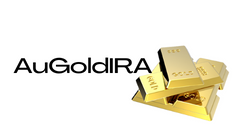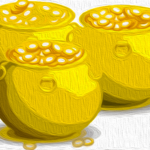The 2017 Bitcoin bull market took the world by storm, with prices skyrocketing from under $200 to nearly $20,000. Now, as we assess the current market scenario, many are speculating whether we are on the verge of experiencing a similar surge. In this article, we delve into the data and trends that indicate we might be heading towards another massive bull cycle.
Understanding Bitcoin Bull Cycles
Bitcoin has witnessed several bull cycles, each with its distinct characteristics. The most remarkable of these was the 2017 cycle, where the price saw an unprecedented surge. As we scrutinize the present market conditions, we observe some intriguing parallels.
Comparing the Current Cycle to Previous Cycles
When we draw comparisons between the ongoing cycle and its predecessors, especially the 2017 cycle, we uncover some significant similarities. Here are key points highlighting these correlations:
- Cycle Length: The 2017 cycle reached its peak 168 days from its low, while the 2021 cycle hit its peak at 160 days. Currently, we are 779 days into this cycle, indicating a considerable duration remaining.
- Price Action Correlation: The correlation between the current cycle and the 2017 cycle stands at a remarkable 0.92. This close alignment in price movements suggests a potential replication of the previous trajectory.
- Investor Behavior: The MVRV (Market Value to Realized Value) ratio exhibits a strong correlation of 0.83 with the 2017 cycle, indicating a resemblance in investor behavior patterns.
The Significance of Halving Events
Bitcoin halving events have historically served as crucial milestones in the price cycle. The most recent halving took place in 2024, and as we analyze the current cycle, we notice a close adherence to the pattern established in 2017. The timing of halving events in both cycles suggests a potential continuation along a similar trajectory.
Future Predictions
Looking forward, if the current cycle mirrors the 2017 pattern, we could anticipate a substantial price surge throughout 2025. While some projections hint at prices soaring to $1.5 million, it is advisable to approach such forecasts cautiously. A more realistic peak might align with historical trends, possibly occurring towards late 2025.
In Closing
In essence, the ongoing Bitcoin bull market displays notable parallels with the 2017 cycle, both in terms of price trends and investor sentiments. While we may not witness the same explosive growth as seen in 2017, the data suggests an exhilarating journey ahead in the upcoming months. It is imperative to stay informed and base decisions on thorough analysis.
If you are keen on delving deeper into analysis and accessing real-time data, consider exploring Bitcoin Magazine Pro for valuable insights into the Bitcoin market.
Disclaimer: This article serves for informational purposes only and should not be construed as financial advice. Always conduct your research before making any investment decisions.
Frequently Asked Questions
How much are gold IRA fees?
$6 per month is the Individual Retirement Account Fee (IRA). This includes account maintenance and any investment costs.
If you wish to diversify your portfolio, you may need to pay additional fees. These fees will vary depending upon the type of IRA chosen. Some companies offer free check accounts, but charge monthly fee for IRA accounts.
A majority of providers also charge annual administration fees. These fees vary from 0% to 11%. The average rate for a year is.25%. However, these rates are typically waived if you use a broker like TD Ameritrade.
How much should precious metals be included in your portfolio?
To answer this question, we must first understand what precious metals are. Precious elements are those elements which have a high price relative to other commodities. This makes them very valuable in terms of trading and investment. Gold is currently the most widely traded precious metal.
But, there are other types of precious metals available, including platinum and silver. The price for gold is subject to fluctuations, but stays relatively stable in times of economic turmoil. It is not affected by inflation or deflation.
In general, prices for precious metals tend increase with the overall marketplace. However, they may not always move in synchrony with each other. For example, when the economy is doing poorly, the price of gold typically rises while the prices of other precious metals tend to fall. Investors are more likely to expect lower interest rates making bonds less attractive investments.
Contrary to this, when the economy performs well, the opposite happens. Investors favor safe assets like Treasury Bonds, and less precious metals. Since these are scarce, they become more expensive and decrease in value.
You must therefore diversify your investments in precious metals to reap the maximum profits. You should also diversify because precious metal prices can fluctuate and it is better to invest in multiple types of precious metals than in one.
How to open a Precious Metal IRA
First, decide if an Individual Retirement Account is right for you. Open the account by filling out Form 8606. Next, fill out Form 5204. This will determine the type of IRA that you are eligible for. This form must be submitted within 60 days of the account opening. Once this has been completed, you can begin investing. You can also contribute directly to your paycheck via payroll deduction.
Complete Form 8903 if your Roth IRA option is chosen. Otherwise, it will be the same process as an ordinary IRA.
To be eligible for a precious metals IRA, you will need to meet certain requirements. The IRS stipulates that you must have earned income and be at least 18-years old. For any tax year, your earnings must not exceed $110,000 ($220,000 for married filing jointly). Contributions must be made regularly. These rules apply whether you're contributing through an employer or directly from your paychecks.
You can use a precious metals IRA to invest in gold, silver, palladium, platinum, rhodium, or even platinum. However, you won't be able purchase physical bullion. This means you won't be allowed to trade shares of stock or bonds.
Your precious metals IRA can be used to directly invest in precious metals-related companies. This option can be provided by some IRA companies.
There are two main drawbacks to investing through an IRA in precious metallics. First, they don't have the same liquidity as stocks or bonds. This makes them harder to sell when needed. Second, they don't generate dividends like stocks and bonds. You'll lose your money over time, rather than making it.
What tax is gold subject in an IRA
The fair market price of gold when it is sold determines the tax due on its sale. If you buy gold, there are no taxes. It isn't considered income. If you decide to make a sale of it, you'll be entitled to a taxable loss if the value goes up.
For loans, gold can be used to collateral. Lenders try to maximize the return on loans that you take against your assets. This usually involves selling your gold. It's not guaranteed that the lender will do it. They may keep it. They might decide to sell it. Either way, you lose potential profit.
If you plan on using your gold as collateral, then you shouldn't lend against it. You should leave it alone if you don't intend to lend against it.
Should you Invest In Gold For Retirement?
The answer depends on how much money you have saved and whether gold was an investment option available when you started saving. If you are unsure which option to choose, consider investing in both options.
Gold is a safe investment and can also offer potential returns. Retirement investors will find gold a worthy investment.
Although most investments promise a fixed rate of return, gold is more volatile than others. Because of this, gold's value can fluctuate over time.
But this doesn't mean you shouldn't invest in gold. This just means you need to account for fluctuations in your overall portfolio.
Another advantage to gold is that it can be used as a tangible asset. Unlike stocks and bonds, gold is easier to store. It is also easily portable.
You can always access your gold as long as it is kept safe. There are no storage charges for holding physical gold.
Investing in gold can help protect against inflation. Because gold prices tend to rise along with other commodities, it's a good way to hedge against rising costs.
Also, you'll reap the benefits of having some savings invested in something with a stable value. Gold tends to rise when the stock markets fall.
Another advantage to investing in gold is the ability to sell it whenever you wish. You can also liquidate your gold position at any time you need cash, just like stocks. It doesn't matter if you are retiring.
If you do decide to invest in gold, make sure to diversify your holdings. You shouldn't try to put all of your eggs into one basket.
Also, don't buy too much at once. Start with a few ounces. Next, add more as required.
Remember, the goal here isn't to get rich quickly. Instead, the goal here is to build enough wealth to not need to rely upon Social Security benefits.
Even though gold is not the best investment, it could be an excellent addition to any retirement plan.
How much is gold taxed under a Roth IRA
An investment account's tax rate is determined based upon its current value, rather than what you originally paid. All gains, even if you have invested $1,000 in a mutual funds stock, are subject to tax.
You don't pay tax if you have the money in a traditional IRA/401k. Dividends and capital gains are exempt from tax. Capital gains only apply to investments more than one years old.
The rules governing these accounts vary by state. Maryland's rules require that withdrawals be taken within 60 days after you turn 59 1/2. Massachusetts allows you up to April 1st. New York offers a waiting period of up to 70 1/2 years. To avoid any penalties, plan your retirement savings and take your distributions as early as possible.
Should You Buy or Sell Gold?
Gold was a safe investment option for those who were in financial turmoil. Many people are shifting away from traditional investments like bonds or stocks to instead look toward precious metals such gold.
The trend for gold prices has been upward in recent years but they still remain low relative to other commodities like silver and oil.
Experts think this could change quickly. Experts predict that gold prices will rise sharply in the wake of another global financial collapse.
They also noted that gold is growing in popularity because of its perceived value as well as potential return.
If you are considering investing in gold, here are some things that you need to keep in mind.
- First, consider whether or not you need the money you're saving for retirement. You can save money for retirement even if you don't invest in gold. The added protection that gold provides when you retire is a good option.
- You should also be aware of what you are getting into before you buy gold. There are many types of gold IRA accounts. Each type offers varying levels and levels of security.
- Last but not least, gold doesn't provide the same level security as a savings account. If you lose your gold coins, you may never recover them.
Don't buy gold unless you have done your research. If you already have gold, make sure you protect it.
Statistics
- You can only purchase gold bars at least 99.5% purity. (forbes.com)
- Instead, the economy improved, stocks rebounded, and gold plunged, losing 28 percent of its value in 2013. (aarp.org)
- Gold is considered a collectible, and profits from a sale are taxed at a maximum rate of 28 percent. (aarp.org)
- This is a 15% margin that has shown no stable direction of growth but fluctuates seemingly at random. (smartasset.com)
- If you take distributions before hitting 59.5, you'll owe a 10% penalty on the amount withdrawn. (lendedu.com)
External Links
investopedia.com
wsj.com
- Saddam Hussein's Invasion Helped Uncage a Bear In 1990 – WSJ
- Want to Keep Gold in Your IRA at Home? It's Not Exactly Legal – WSJ
law.cornell.edu
- 7 U.S. Code SS7 – Designation board of trade as contract marketplaces
- 26 U.S. Code SS 408 – Individual retirement plans
bbb.org
How To
Three ways to invest in gold for retirement
It's essential to understand how gold fits into your retirement plan. There are many ways to invest in gold if you have a 401k account at work. You may also be interested in investing in gold beyond your workplace. One example is opening a custodial accounts at Fidelity Investments if an IRA (Individual Retirement Account), if you already own one. Or, if you don't already own any precious metals, you may want to consider buying them directly from a reputable dealer.
If you do invest in gold, follow these three simple rules:
- Buy Gold with Your Cash – Don't use credit cards or borrow money to fund your investments. Instead, instead, transfer cash to your accounts. This will help to keep your purchasing power high and protect you against inflation.
- Physical Gold Coins – Physical gold coins are better than a paper certificate. Physical gold coins can be sold much faster than paper certificates. You don't have to store physical gold coins.
- Diversify Your Portfolio – Never put all of your eggs in one basket. This means that you should diversify your wealth by investing in different assets. This reduces risk and allows you to be more flexible during market volatility.
—————————————————————————————————————————————————————————————-
Based on [POSTTITLE]
by [POSTAUTHOR]














